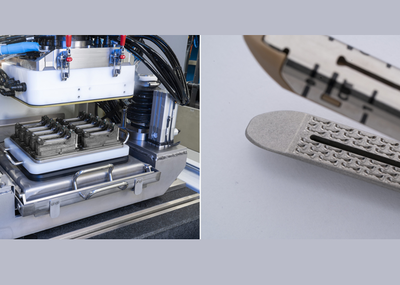It is not only the pronounced changes in the automotive sector that are currently forcing many companies in the grinding industry to realign their strategy. Precise surface treatment comes at the end of nearly every metal working process and has decisive effects on the quality and functionality of products. Manufacturers of abrasives and grinding and dressing tools are therefore being affected by development trends. Since these manufacturers are increasingly faced with ever more new materials and material compounds, they are coming under more pressure to innovate and reduce their costs. It is necessary to exploit optimization potential along the process chain and therefore also profit, if possible, from new processes and findings from scientific research. Since extensive grinding technology applications are decreasing in the powertrain of internal combustion engines, there is an urgent need to find alternative markets according to Prof. Bernhard Karpuschewski, Director of Production Engineering at the Leibniz Institute for Material-Oriented Future Technologies (IWT) in Bremen. The scientist, who is also a member of the German Academic Association for Production Technology (WGP), a group of leading professors for production sciences, sees a number of highly promising developments.
Good prospects for additive manufacturing
"Precision machining of composite materials is certainly one of the expanding new application areas," said Karpuschewski.
The Bremen-based scientist also regards post-processing of additively manufactured components as a rapidly growing area, especially since no ready-to-install functional surfaces could be even printed in the foreseeable future.
Karpuschewski: "An increasingly important role is also being played here by the development of additively manufactured grinding wheelbase bodies in which complex inner cooling channels, for example, can be integrated. This also applies to the additive application of a grinding layer which can be attained, for example, by means of blasting processes."
In general, Prof. Karpuschewski sees growing demand for surfaces with the highest possible surface qualities, for example polish grinding of gears, for which adapted grinding discs in an elastic bond and adapted dressing technologies are required.
GrindingHub, a trend trade fair
The changes in the industry and the associated impacts on production and production technologies will also probably shape the discussions at GrindingHub, which will be held in Stuttgart from 14 to 17 May 2024. This grinding technology trade fair, which is being staged by the German Machine Tool Builders' Association (VDW), will provide an overview of innovations and current trends.
The exhibitors at GrindingHub include Diamant-Gesellschaft Tesch GmbH from Ludwigsburg. The company's product portfolio comprises grinding tools in different bond systems as well as dressing tools. Tesch specializes in super hard materials. Managing Director Dr. Georg Gerlitzky is convinced: "Due to the use of new materials, utilization of highly hard cutting materials such as cBN and diamond during grinding and dressing will become even more important."
According to Gerlitzky, the industry is being affected by both the increasing technological demands and the deteriorating general conditions.







